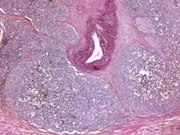Inclusion of MRI-derived parameters can maintain high rate of diagnosis of clinically significant cancer
MONDAY, Feb. 26, 2018 (HealthDay News) — A risk model including magnetic resonance imaging (MRI)-derived parameters may reduce the number of unnecessary biopsies among patients with suspected prostate cancer, according to a study published online Feb. 22 in JAMA Oncology.
Sherif Mehralivand, M.D., from University Medical Center in Mainz, Germany, and colleagues performed MRI, MRI-transrectal ultrasound fusion-guided biopsy, and 12-core systematic biopsy among patients with suspected prostate cancer. Four hundred patients were included in a development cohort that was used to derive the prediction model; the validation cohort included 251 patients from two independent institutions who underwent biopsy.
The researchers found that 48.3 and 38.2 percent of patients in the development and validation cohorts, respectively, had clinically significant prostate cancer (Gleason score ≥3+4). The area under the curve increased from 64 to 84 percent compared with the baseline model when the MRI model was applied to the external validation cohort. The MRI model had a lower false-positive rate than the baseline model at a risk threshold of 20 percent (46 [95 percent confidence interval, 32 to 66 percent] versus 92 percent [95 percent confidence interval, 70 to 100 percent]), with a small reduction in the true-positive rate (89 [95 percent confidence interval, 85 to 96 percent] versus 99 percent [95 percent confidence interval, 89 to 100 percent]). With the MRI model, 18 of 100 fewer biopsies could have been performed, with no increase in missed clinically significant prostate cancers.
“The inclusion of MRI-derived parameters in a risk model could reduce the number of unnecessary biopsies while maintaining a high rate of diagnosis of clinically significant prostate cancers,” the authors write.
Two authors disclosed financial ties to Philips.
Copyright © 2018 HealthDay. All rights reserved.








